
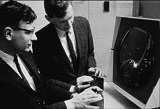
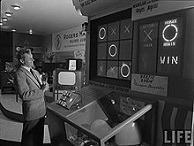

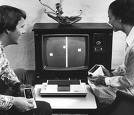



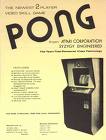



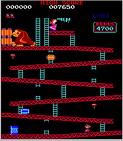
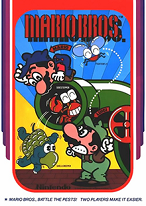














TLW's Video Gamescope™ (Video Game Historyscope) |
By T.L. Winslow (TLW), the Historyscoper™ |
© Copyright by T.L. Winslow. All Rights Reserved. |
Original Pub. Date: Jan. 2, 2020. Last Update: Jan. 7, 2020. |
Westerners are not only known as history ignoramuses, but double dumbass history ignoramuses when it comes to video games and video game history. Since I'm the one-and-only Historyscoper (tm), let me quickly bring you up to speed before you dive into my Historyscopes.
The video game industry began in 1972 with Atari Pong, ramping up by 2018 to $134.9B sales worldwide, becoming the 3rd largest segment of the U.S. entertainment market after broadcast and cable TV.

In 1878 English scientist Sir William Crookes (1832-1919) invents the Cathode Ray (Crookes) Tube (CRT), which requires a vacuum of one twenty-thousandth of atmospheric pressure (0.03 mm Hg), and shows that the rays travel in straight lines that can be deflected by a magnet, then uses the beam to heat metals, turn a small wheel, and excite fluorescence - Star Trek coming right up?

On Jan. 25, 1947 Greenville, S.C.-born physicist Thomas Toliver Goldsmith Jr. (1910-2009) and Estle Ray Mann file for a patent for the first Cathode Ray Tube Amusement Device, which is granted on Dec. 14, 1948 (#2,455,992).


On Aug. 25, 1950 the 13-ft.-tall tic-tac-toe-playing digital computer game Bertie the Brain is released, designed by Vienna, Austria-born Canadian engineer Josef Kates (Josef Katz) (1921-2018) for the 1950 Canadian Nat. Exhibition, with a display consisting of light bulbs; it uses his invention, the Additron Tube, which does the work of ten regular vaccum tubes to make a 1-bit digital full adder, but is kept from commercialization by the advent of the transistor.





On May 24, 1972 Magnavox introduces the Magnavox Odyssey home video game system, designed by German-born Jewish-Am. engineer Ralph Henry (Rudolf Heinrich) Baer (1922-2014), which uses an RCA TV screen and sells 100K the first year; meanwhile after founding Atari Corp. (Jap. "check in the game of Go") on June 26, investing $250 each with his friend Ted Dabny, and hiring engineer Allan Alcorn (1949-) to design and program it, Utah-born Nolan Bushnell (1943-) installs the first of 6K $1K Atari Pong video game machines in Andy Capp's Tavern in Sunnyvale, Calif. in Sept.; the first version of Pong has a B&W Motorola TV screen and costs 25 cents per play, with the instructions "Avoid missing ball for high score"; the video game industry is launched, becoming a 1980s social phenomenon; in 1975 Atari starts selling through Sears & Roebuck stores; too bad, clone makers and pirates soon fracture the market, preventing a Microsoft, er, monopoly from being created, but the example gives crafty Bill Gates the idea of creating one?


In June 1978 the Space Invaders arcade video game, designed by Tomohiro Nishikado (1944-) is released by Taito of Japan, whio licenses it to the Midway div. of Bally in the U.S. in July, becoming a giant money magnet in bars, earning $500M by 2007, causing a coin shortage in Japan, becoming the #1 arcade game of all time (until ?); in 1980 a version for the Atari 2600 becomes their first killer app., earning $2B a year by 1982.



On July 9, 1981 Nintendo releases Donkey Kong (originally Jumpman), featuring Mario the Plumber, designed by Shigeru Miyamoto (1952-), which causes a video game rev.; on July 14, 1983 Ninetendo releases Mario Bros., featuring Mario and Luigi, who have to fight creatures coming out of the sewers by flipping them on their backs and kicking them away.